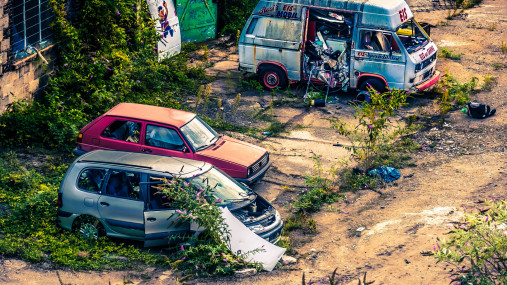
Publications » Position papers » EUROFER comments on the End of Life Vehicles Directive
EUROFER comments on the End of Life Vehicles Directive
Downloads and links
Recent updates

The European Directive on End Of Life Vehicles (ELV) has proven during the years to be a useful instrument for setting up a proper management system aimed at managing vehicles and their parts at their end of life stage.
However, technical and social developments imposed its updated to make it more appropriate for future challenges.
Nowadays, the priority is to have a functional management and treatment of the end of life vehicles and, in particular, of their parts and constituent materials. The priority is to go circular
and thus EUROFER welcomes the opportunity of contributing to the evaluation of the directive and giving his views for improving it. The present paper wants to present some general issues and/or comments linked to the actual use of and to aspects not sufficiently covered by the directive. Moreover, the paper will to highlight issues identified by the sector and how these could be solved in future.

Download this publication or visit associated links
Strasbourg, 17 December 2025 – The European Commission’s latest proposals on the Carbon Border Adjustment Mechanism (CBAM), unveiled today, correctly identify several loopholes that risk undermining its effectiveness, notably regarding EU exports, downstream sectors and circumvention practices. However, despite these laudable efforts, the measures put forward fail to deliver a comprehensive and durable response to carbon and jobs leakage, warns the European Steel Association (EUROFER).
A milestone occasion to quickly and effectively restore affordable electricity, to relaunch the
decarbonization and strengthen the international competitiveness of the European steel
industry.
Brussels, 02 December 2025 – Unchanged negative conditions – U.S. tariffs and trade disruptions, economic and geopolitical tensions, protracted weak demand and still high energy prices – continue to weigh on the European steel market. EUROFER’s latest Economic and Steel Market Outlook confirms for 2025 another recession in both apparent steel consumption (-0.2%, unchanged) and steel-using sectors (-0.5%, revised from -0.7%). A potential recovery is expected only in 2026 for the Steel Weighted Industrial Production index (SWIP) (+1.8%, stable) and for apparent steel consumption (+3%, slightly revised from +3.1%) – although consumption volumes would still remain well below pre-pandemic levels. Steel imports retained historically high shares (27%), while exports plummeted (-9%) in the first eight months of 2025.